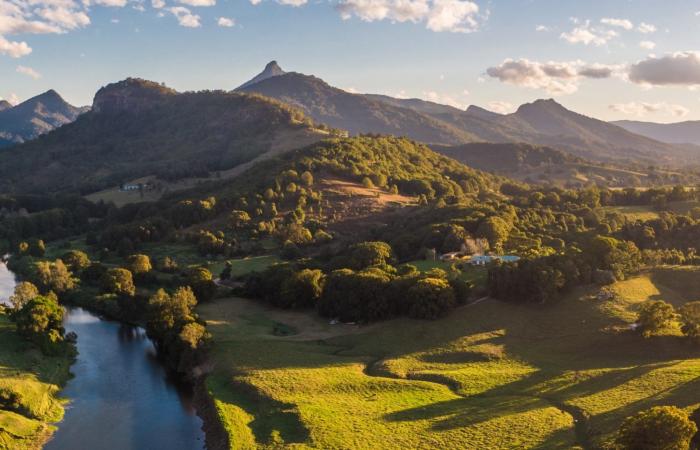“But those ideas haven’t really been tested on a large scale,” said Mr. Manley, who began the study during a bachelor’s exchange at the University of Sydney’s School of Geosciences and graduated from the University of Colorado at Boulder.
Research now published in the journal Limits in Earth Scienceswill allow scientists to test these claims in the Tweed Basin, a 1,326 square kilometer region, and other regions that act as carbon sinks.
Co-author Dr. Tristan Salles of the School of Geosciences at the University of Sydney said: “We ran seven scenarios through 2100 and 2500 to see how much carbon can be absorbed under different climatic conditions.
“We estimate that millions of tons of carbon dioxide could be absorbed in all scenarios – but this is a drop on the ocean from billions of tons of carbon pollution per year that are expected to be released in the decades and centuries to come.”
The seven scenarios also describe a complex and interconnected interplay between weathering and sea level rise, with oceans invading along the Tweed Coast. In some areas, however, extensive weathering is depositing large amounts of new sediment on the coastal plain.
Dr. Salles said: “With increased global temperatures, this part of Australia will likely experience increased rainfall, which will significantly accelerate the weathering process of oliving rocks.
“Our modeling shows that in some parts of the Tweed Au, between 3.8 and 6.5 meters of sediment can be deposited. In a counter-process, coastal erosion will come from the invading ocean. ”
After their first modeling of the Tweed Basin, scientists could absorb between 57 and 73 million tons of carbon dioxide annually from weathering olivine by the end of this century. The United Nations median estimate of carbon emissions by 2100 is about 70 billion tons per year, which means a location like the Tweed Basin would absorb less than 0.1 percent of total carbon emissions.
Scientists used model data from the Australian government and the United Nations International Panel on Climate Change, as well as extensive data on the Tweed River Valley from Geoscience Australia and the three-dimensional Great Barrier Reef Project (3DGBR).
“Nobody suggests that carbon sequestration through olivine weathering will solve our problems,” said co-author Professor Dietmar Müller. “Given that there are proposals to artificially improve this weathering process to absorb the carbon pollution, it is important that we understand how feasible this can be.”
The scientists say their modeling will help identify other regions where climate change could create environments where increased natural carbon sequestration could occur.
“We have found that the rate and extent of sea level rise are the dominant controls over where, when and how much sediment is deposited in such a region,” said Manley.
“Climate change will throw these river systems out of balance. So there is still a lot to be done to understand how they work as natural carbon sinks. ”
Explanation
There was no outside funding for this research.
These were the details of the news Tweed Valley is a “natural laboratory” for testing carbon sequestration theory for this day. We hope that we have succeeded by giving you the full details and information. To follow all our news, you can subscribe to the alerts system or to one of our different systems to provide you with all that is new.
It is also worth noting that the original news has been published and is available at de24.news and the editorial team at AlKhaleej Today has confirmed it and it has been modified, and it may have been completely transferred or quoted from it and you can read and follow this news from its main source.

